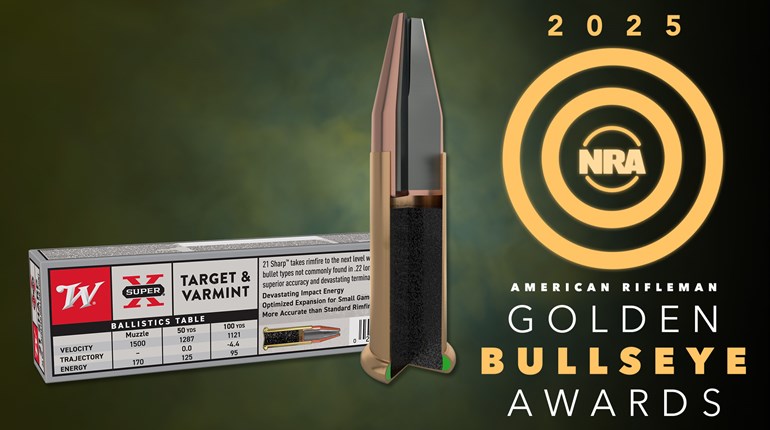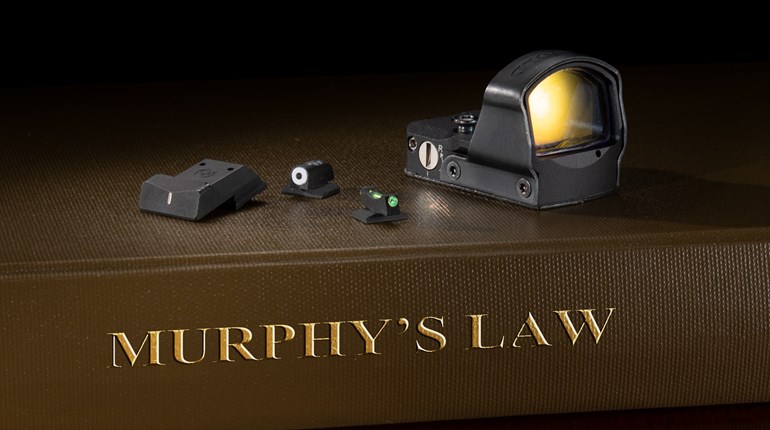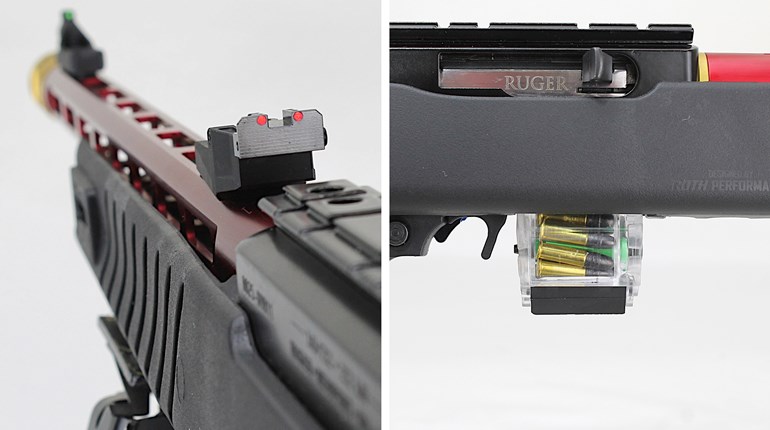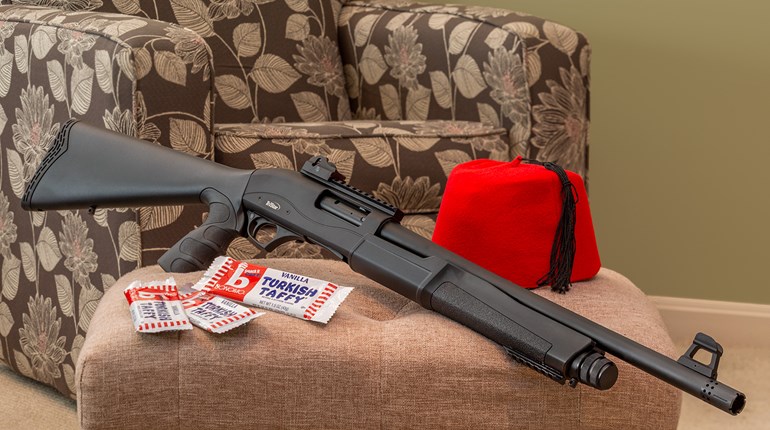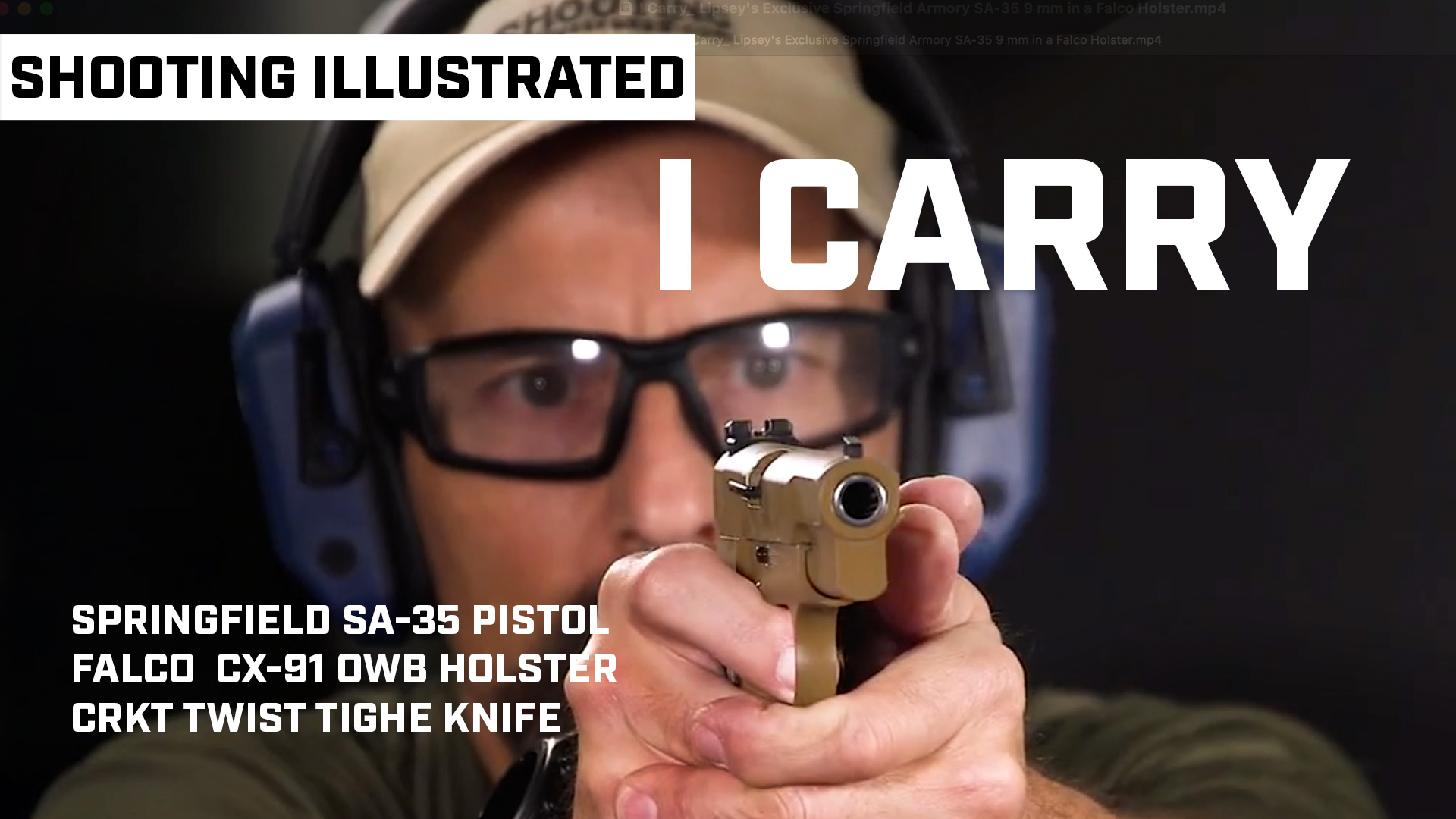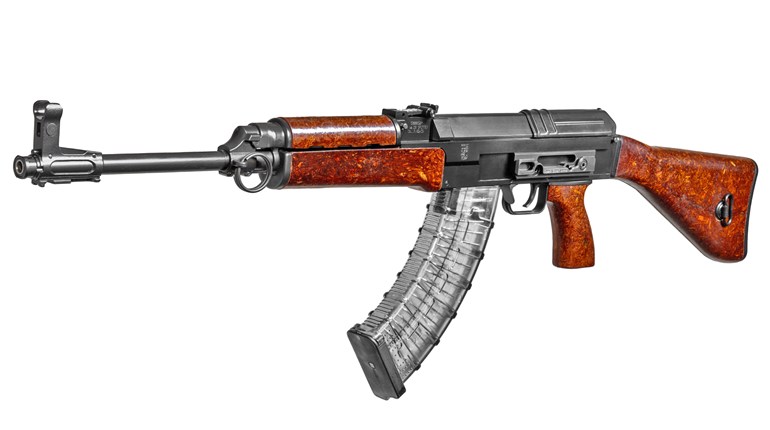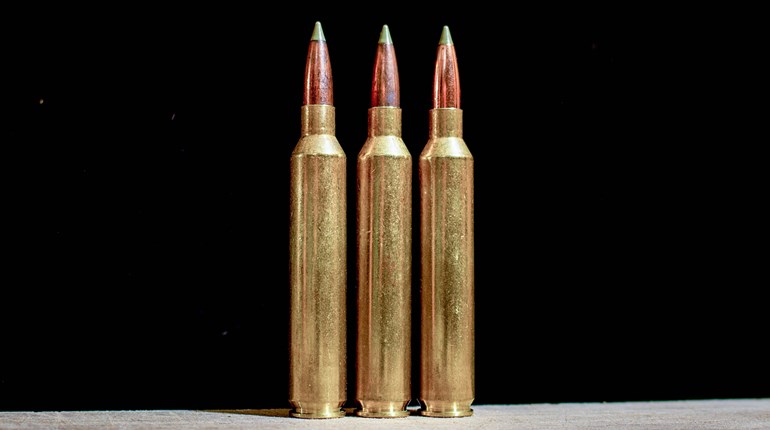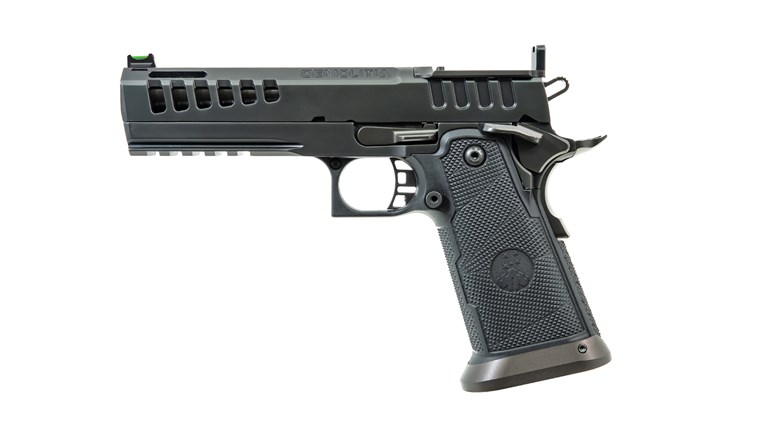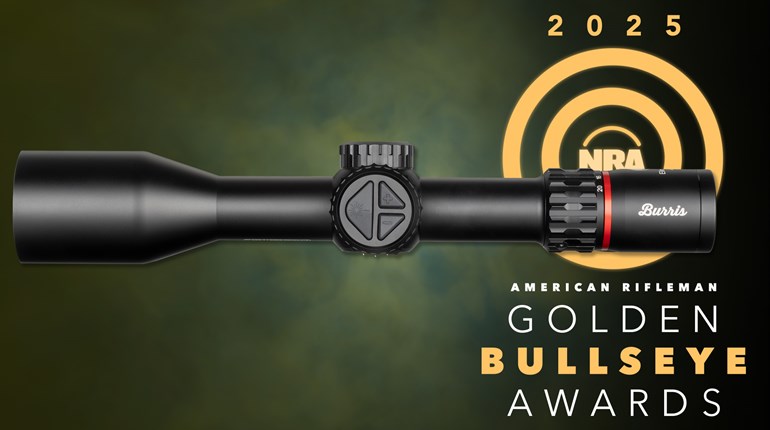
Many of today’s tactical shotguns come with more rails than Washington, DC’s L’Enfant Plaza station, but that doesn’t mean you must burden them with needless accessories that will just weigh you down. Over the years, however, I’ve identified several accoutrements that are more than mere shotgun fashion. The following accessories can actually lend advantage when the moon is rising and the ne’er-do-wells come knocking.
Sling
The more I train with a shotgun, the more I feel a sling is an absolutely necessary addition. That’s because shotguns are heavy, and plenty of times while moving, lifting things, herding kids or whatever, you’ll need both hands. A sling allows you to use your hands while retaining your long gun, which means you can switch to a handgun if need be and still have your shotgun on your person. It also makes it tougher for an attacker to take it from you. For me, the simpler the sling, the better. I don’t like one that stretches or that doubles as a backscratcher or whatever. If your shotgun has anchors for quick-release swivels, great, but plain-old sling studs will do.
Extended Mag Tube
A standard shotgun’s biggest weakness is its limited magazine capacity. So, if you plan on using your old hunting gun for home defense—a fine choice—strongly consider buying a two- or three-shot magazine extension for it. The extra shells can save you the trouble that is reloading any shotgun not fed from a detachable-box magazine, a category which includes, of course, most shotguns.
Side-Saddle
A side-saddle-type accessory keeps additional rounds attached to the gun so you don’t have to fumble around in the dark if it’s go-time. Just grab the shotgun and rest assured you have a few more rounds if things get dire. Plus, if your magazine runs dry, you can load directly from the receiver- or stock-mounted saddle rather than lowering the shotgun and fishing for more shells out of a pocket or box.
Flashlight
I believe all tactical/defensive guns should be equipped with a flashlight, but especially shotguns that are often too heavy to hold with one hand while holding a flashlight with another. It’s tough to beat an aftermarket fore-end extension containing an integral flashlight, but they are expensive (like, the cost-of-a-new-shotgun expensive). So, if you think this is overkill, as I do, go with a simple mag-tube-mounted flashlight holder or one of any number that attach to a rail. They all work fine. Choose a mount and a light based on your budget and, if you have to, install it with shims or tape so that the beam aligns roughly with your shotgun’s pattern. You’ll be glad you did when you hear a noise, the lights go out and your house suddenly feels like that creepy last dungeon scene in “The Silence of the Lambs.”
Quality Recoil Pad
Most hunting guns come with excellent recoil pads, but I’m amazed at how many of today’s modern tactical guns do not. Perhaps it’s because the makers figure the user will be wearing a bulletproof vest, or maybe they just think we should be impervious to pain. But, the bottom line is, the less the shotgun kicks—and they kick plenty—the more you’re likely to practice with it, and the more you practice with it, the better prepared you will be in a real emergency. Check out aftermarket recoil pads from companies such as Pachmayr and Limbsaver. You and your shoulder will be glad you did.
Sights
We’ve covered this topic in a recent column, but suffice it to say, if your shotgun wears any type of a simple bead sight, stop reading now. But, if it wears ghost-ring sights, a red-dot optic or any type of rifle sights (and you plan on using buckshot and not slugs), my advice is to take them off your shotgun immediately and replace with either a simple brass-bead sight (painted white with a dab of nail polish) or consider paying extra for the best shotgun sights in the business, XS Tritium sights. They are simple, robust, and glow in low light without batteries.












